Maemo Leste - Sixteenth Update: November and December 2021, January - April 2022
The long overdue update is finally here, and it's our biggest update yet. (Also check out our previous update in case you missed it).
These past few months have been heavily about stability and bug fixing, but there are some cool additions and improvements to our userspace as well, in particular to the communication and phone aspects of Maemo Leste.
Here are a few highlights:
- improved performance and stability for graphics drivers for OMAP / PowerVR based devices such as Nokia N900 and the Motorola Droid 3, Motorola Droid 4 and Motorola Bionic;
- graphics rendering problems on the Pinephone and Pinetab are all fixed;
- Nokia N900 kernel support is now based on 5.15 instead of 5.1 fixing many regressions along the way;
- addition of the Maemo contacts application and contacts library
- updates on the conversations application, phone call support and the telepathy framework and user interfaces;
- 2-3 day battery life for the supported Motorola Droid devices
Images and upgrading
We are still very actively developing Maemo Leste, so many things remain in flux. As a result, you might have to occassionally update using apt dist-upgrade as opposed to just apt upgrade - this is especially true for this update. Alternatively you can just install the latest images if things do break.
In the past, sometimes Maemo Leste upgrades would cause unexpected reboots, breaking the system, we've tried to now solve those problems by preventing certain packages from restarting. Additionally, the presence of the /etc/no_lg_reboots file will prevent the system from rebooting in cases where services do crash repeatedly.
New images
We spin new images weekly, but for this blog post have checked that all of the supported devices (n900, droid3, droid4, bionic, pinephone) boot fine. You can find the images here.
Hardware & Drivers
OMAP and PowerVR drivers
freemangordon has been working really hard together with some other Maemo Leste developers to move to the latest PowerVR drivers available - both in kernel and userspace. In addition to that, there is now 2D EXA acceleration in X using the PowerVR drivers as well. This has been a multi-year effort by many people, and it's finally here, bringing all devices to the latest Linux kernels.
This involved integrating and improving on the chromium os PowerVR mesa driver (which also brought all the devices up to a newer mesa version - 21.2.5), fixing up the xf86-video-omap driver to support EXA and fix up its buffer management, rotation support, as well as many fixes to the kernel, here are just a few:
- https://github.com/maemo-leste/droid4-linux/commit/067976f0afd4a65bf32a3f450ee42f508a1b0612
- https://github.com/maemo-leste/droid4-linux/commit/7708a2ab996360826fa085374ca794cfd034cc4b
- https://github.com/maemo-leste/droid4-linux/commit/f56836db3ec4210c5cfaf40fa721a6e21cd7730e
In addition to all of that impressive work, we're also hoping to finally enable the tear free operation of the Droid 4 display.
The driver also improves stability and fixes various crashes in the previous drivers. The driver is available immediately for the Nokia N900, Motorola Droid 3, Motorola Droid 4 and Droid Bionic.
The Nokia N900 won't support rotation yet, but at least it will no longer segfault - we know what needs to be done to support rotation, and it's in the works.
Some more background information can be found in issue #524.
Pinephone, Mesa and Clutter
Maemo Leste on the Pinephone suffered from various graphical glitches, but these have now all finally been resolved. There were various problems to resolve, the first one was in clutter, which assumed that the display drivers were not using double buffering, even though they in fact were.
Once that was fixed, another problem surfaced, regarding the preservation of EGL buffers in Mesa. Clutter relies on the fact that the buffers are preserved, but didn't actually request that support. However, requesting the support was not enough, because Mesa doesn't (always) implement the feature, for which we filed this report at mesa.
enunes was particularly instrumental in helping working around the problem. providing us with a minimal stop-gap patch to add support for this feature to mesa while we improve clutter further to switch to buffer age extensions, rather than relying on this feature being available.
Nokia N900
The Nokia N900 was stuck on Linux 5.1 for quite a long time in Maemo Leste, because of the aforementioned graphics driver troubles, which have now finally been resolved. As such we set forth to move to the latest Linux kernel only to found that the support was once again quite broken. More precisely:
- Wifi was broken (see issue #572)
- LEDs were broken (also device tree work was required);
- OFF mode was never being hit again due to memory compaction and thermal driver changes;
- The N900 modem driver would panic and reset the device upon usage;
- Automatically turning on OFF mode caused race conditions during boot that causes resets;
After spending a week bisecting to find all the various problems, various fixes have already made it mainline, but other breakage still needs more investigate before we can send a fix upstream, but at least our kernel carries the necessary fixes and reverts.
We've also unified the Droid 4 and N900 kernel, so all this work can now be found here (the repository will be renamed to omap-linux in due time):
As part of the kernel unification, we also created maemo-kernel-config to create kernel images that are N900 u-boot compatible.
We're also still working on further Nokia N900 power management improvements, to this end we have created the n900-pm script, and have starting improving power management of various drivers (touchscreen work to use runtime pm and to disable irqs upon suspend already help some), but there are more drivers that need to be worked on.
This long github issue details some of the things we went through to get the N900 back in shape.
As of writing, we now run the N900 on Linux 5.15 (see issue #587), and will soon switch to 5.16 or 5.17 in our development channel(s).
We also tweeted about this work in what turned out to be our most popular tweet so far.
Motorola Droid 3, Droid 4, Bionic
Headphone plug events
The Droid 4 (and other mapphones) now support detecting the (un)plugging of a headphone, to ensure that audio is routed properly.
Droid 3 images
After reporting on the Droid 3 port in the previous update, we are now also offering images for the Droid 3. It's a neat device, much like the Droid 4, feels more sturdy, but comes with less RAM. We still have more issues to work on for the Droid 3 port, though - in particular there is still a common problem where the Droid 3 freezes and resets.
The latest Droid 3 image can be found here - keep in mind that a special clownboot kexec bootloader setup is still required (see the instructions here).
Power management
A new mce module called quirks-mapphone has been introduced, introducing additional power saving mechanisms. For example, it will cause the modem not to report on signal strength if the device screen is turned off, which prevents waking up ofono, and then D-Bus, and then programs that listen for ofono on D-Bus. The module also turns off the secondary CPU to prevent additional wakeups (issue #594), but only if the screen is turned off.
freemangordon improved the responsiveness of the module somewhat, leading to faster screen lock and unlock (see mce PR #52).
Below is a screenshot from a Motorola Droid 4 with a used battery, showing that it has two days of online time left. Keep in mind that this means the device would be online all the time - this is not about suspend to ram time (which is not necessary on OMAP4). Similar time estimates can be expected on the Droid 3 and the Bionic, and there are still things to improve upon. OMAP4 does not yet support OFF mode, but when it does we suspect we will see further power savings. One audio clock also isn't always gated yet, once we figure out why that is the case, we could save a few more milliwatts.
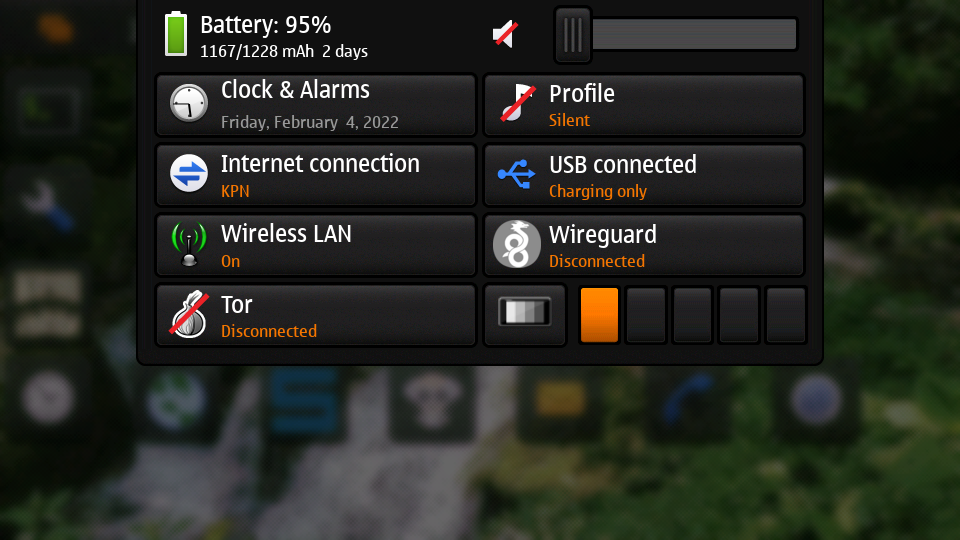
Pinephone
rafael2k has helped getting our PinePhone support into much better shape. We now ship a 5.15-based kernel fixing up the modem support and audio during phone calls.
We now also have a package for PinePhone bluetooth firmware. Combined with the graphics updates mentioned in Pinephone, Mesa and Clutter and supported for the light and proximity sensor, the Pinephone is in good shape - better than it has ever been on Maemo Leste.
Last but definitely not least, our newer PinePhone kernel images also support the hardware keyboard case for the PinePhone.
Core Software additions and changes
osso-abook (addressbook)
After many months of hard work (maybe even years), the Maemo addressbook library is now ready and the Contacts user interface based on the library is also shaping up nicely.
Importing contacts from a Fremantle Nokia N900 works, and synchronising them with remote servers using syncevolution has also been reported to work. The email client (modest) has already integrated support for the address book.

The screenshot above shows the contact overview from the main "Contacts" application - applications can also embed this view or use it as a dialog. All the contacts imported from a Nokia N900 that has been in use for over 10 years.
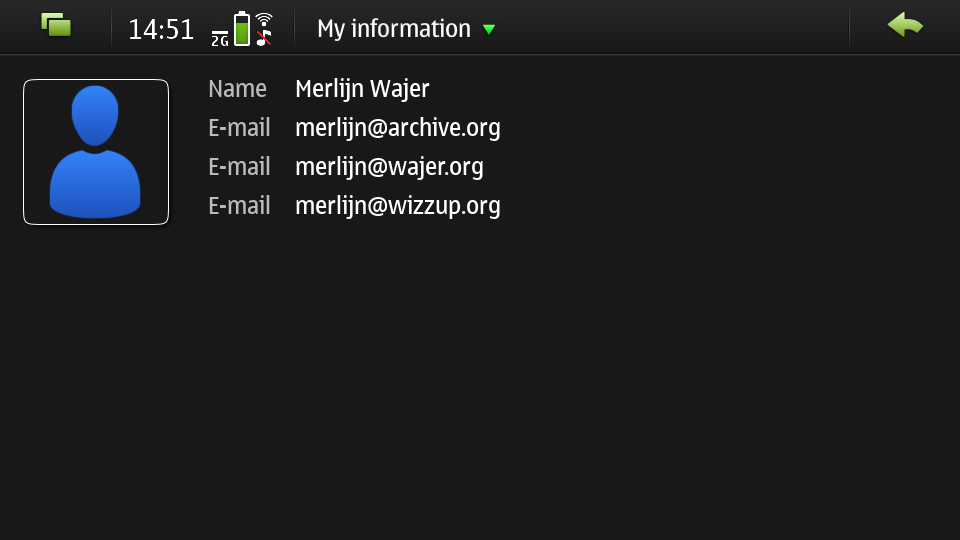
This is the screen of the personal information of the user of the device.
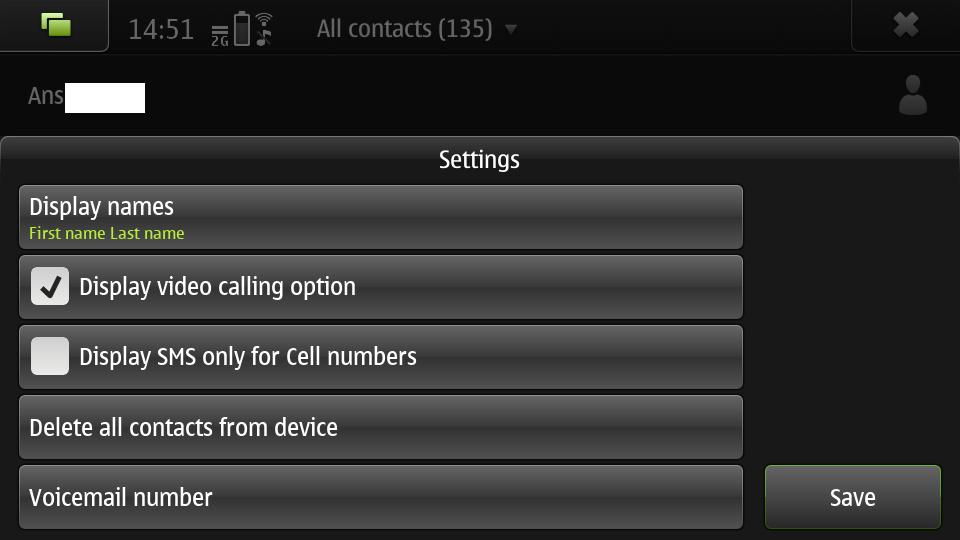
Some of the contact settings are not fully implemented yet - for example, we don't support video calling yet, but at least the setting is there.
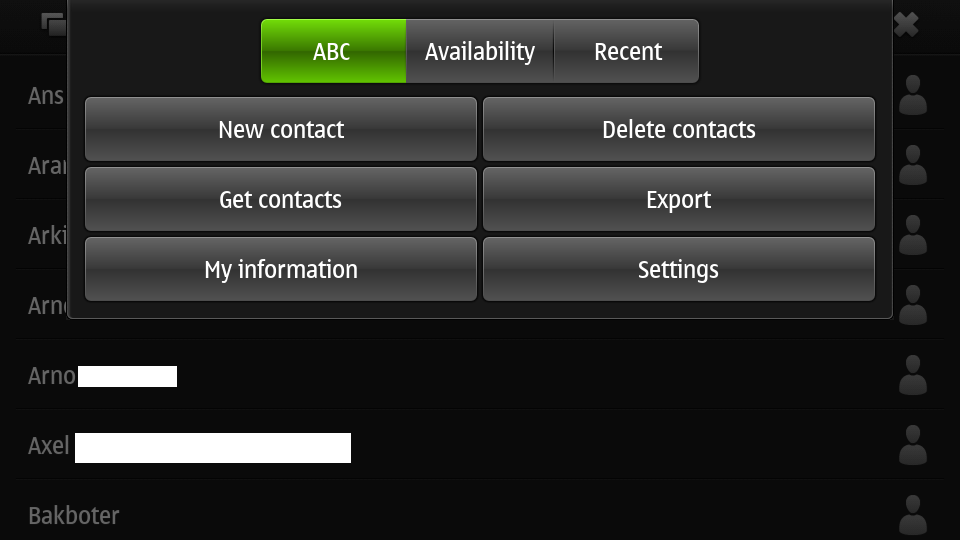
This screenshot shows the context menu of the contacts application in the overview window.

Creating new contacts is also possible!
conversations
We've been working on an open source replacement for the Conversations application, with many of the core components written by a newcomer - dsc. The replacement is written in Qt5 and QML, and can currently read and show the rtcom communications database, but has only limited addressbook integration. We have had some luck integrating Telepathy, and both sending and receiving SMS/IRC/XMPP messages works (including logging the messages to the RTcom database), but the code is not yet available in the package repositories, as there are still some bugs to solve when using multiple Telepathy accounts.
For it to fully work, more work is also required for the Telepathy integration in other parts of the system, in particular we need to get some of the other RTCom components in place. This wiki page contains some notes on the various components, but it hasn't been kept up to date with the latest developments yet.
The following still needs to be fixed up or outright implemented:
- Support for starting a new chat with a potentially unknown contact
- Support for multi-person chat rooms
- Support for multiple accounts (this should in theory work, but we have to debug how we use Telepathy Qt here)
- Various UI improvements to clearly separate the different protocols
- Better support for system themes, some of the assets are currently semi-hardcoded in the QML files
Nevertheless - here are some screenshots of the current application.
The screenshot below shows the recent messages overview, scrolling in this screen is also very smooth.
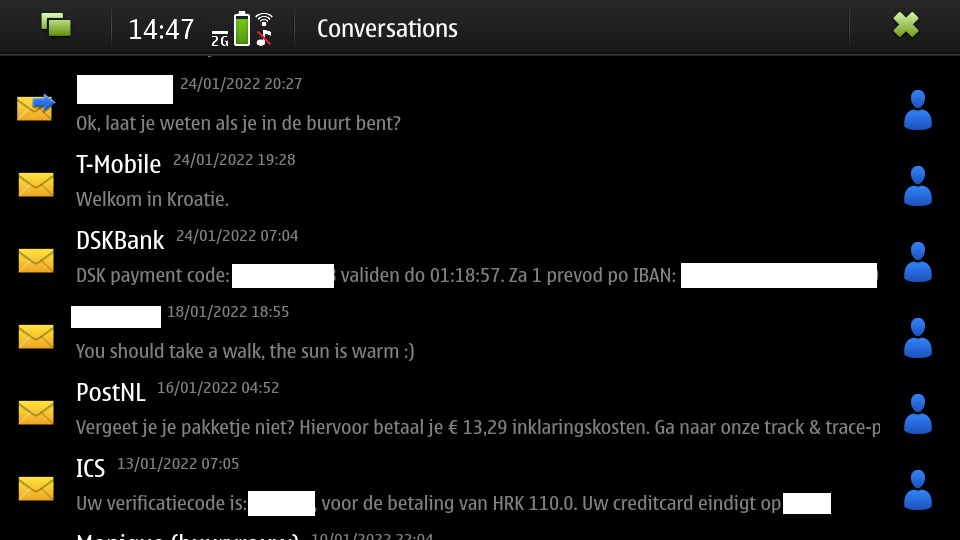
The settings in Conversations are currently limited to switching between the built-in themes and changing the text scaling.
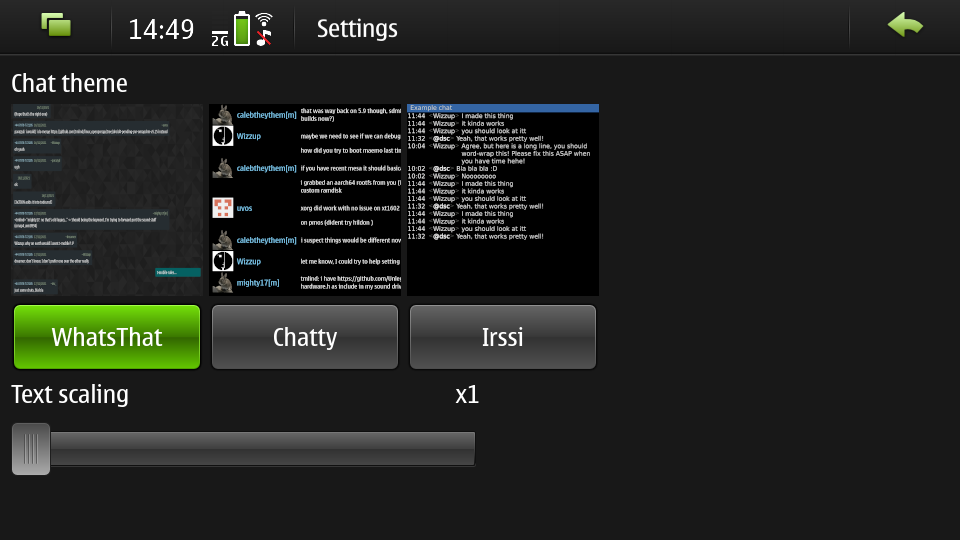
The chat view of a specific conversation typically looks something like this

and it works in portrait mode, too!
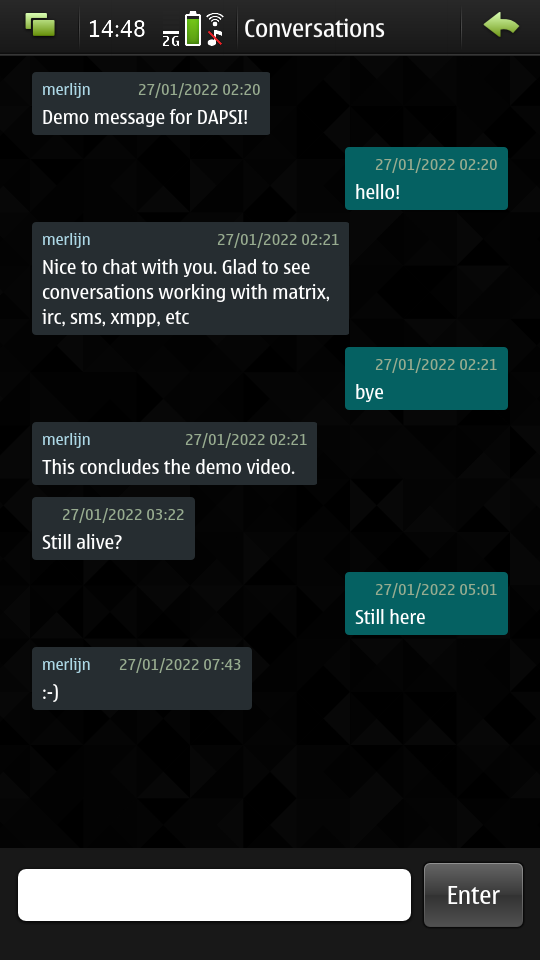
And of course, we just have to show off the irssi theme...
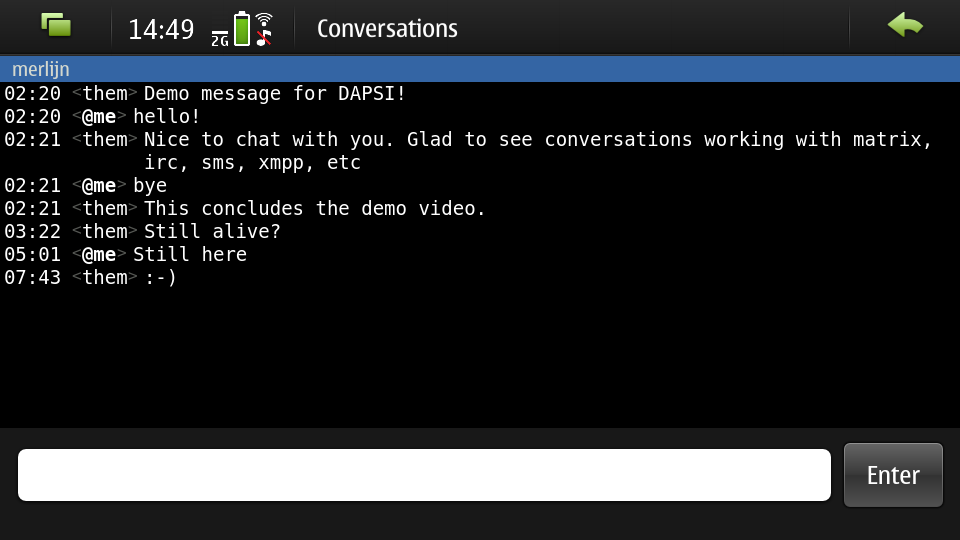
rtcom-accounts-ui
The user interface to configure communication accounts is rtcom-accounts-ui, which freemangordon has also been working on. Currently there is already a control panel plugin, which allows configuring a XMPP account. We will be integrating this into conversations Telepathy support, at which point we should soon have working communications for many protocols. At that point, we'll add more plugins for rtcom-accounts-ui to support more protocols.
The last piece of this work will be getting rtcom-presence-ui into shape, which adds presence and also (we believe) managing the online status of the Telepathy accounts of the user.
These screenshots show the control panel applet in action (and no, we didn't forget to remove the email address or name):

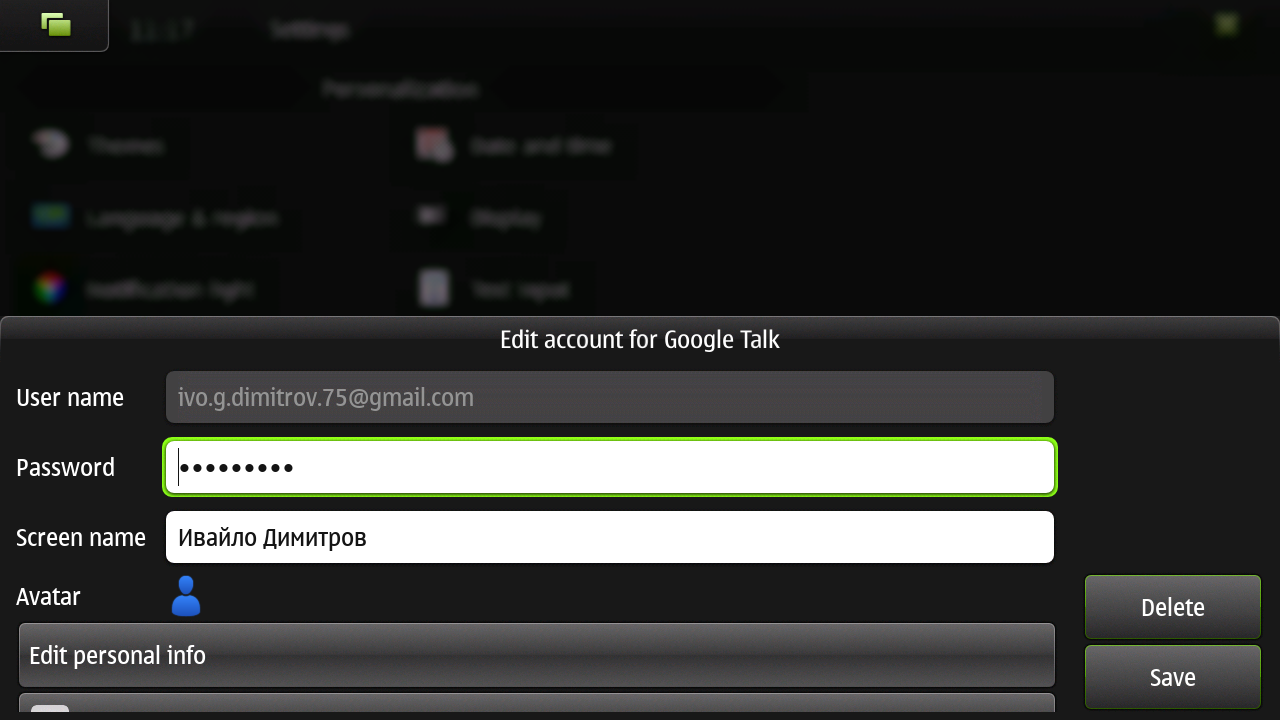
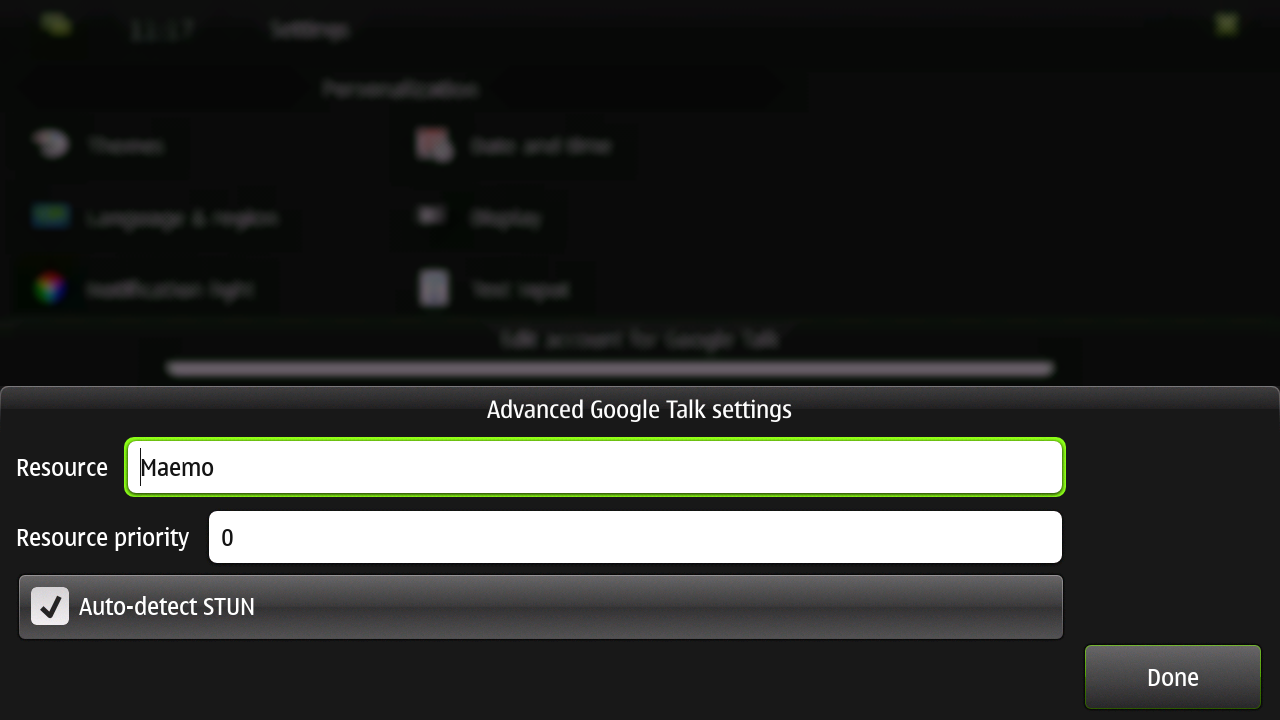
The relevant repositories are here:
sphone
The sphone dialer application has gained basic support for the Maemo address book, and it can also write text and call events to the RTCom database. This means that all incoming messages and calls are being logged (that's a good thing) -- in the future other applications (like conversations) will likely deal with the logging of incoming messages, though.
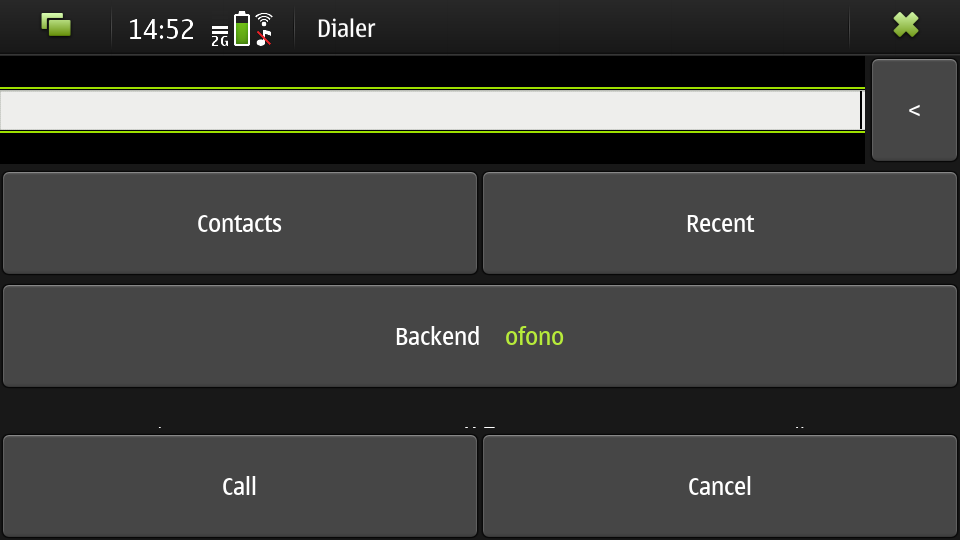
charging-mode
Our latest images (and also upgraded devices) now ship with a feature called "charge mode", which will boot to a special charging-only mode when the phone starts with a usb cable providing power. This was created (based on existing software) by uvos, and here is a video he made to show off the work:
Virtual keyboard
The virtual keyboard has a mode where it only shows special keys - this had silently been broken but has since been fixed.
maemo-launcher
maemo-launcher has seen some fixes with regards to resolving symlinks that are multiple levels deep, see issue #484. This helps selecting alternative default terminal applications.
hildon-desktop
uvos fixed a particularly interesting bug in hildon-desktop where scrolling the applications would immediately stop scrolling when the touch event ended (i.e. the user stopped touching the touch screen), this was ultimately related to a time overflow, and since Fri May 15 02:09:25 2015 UTC the scroll events were no longer smooth. See PR 17 for more details.
hildon-desktop also now quotes commands send to the terminal emulator, ensuring that the commands get through correctly.
libhildondesktop will now also (re)load applications and widget applets upon install, fixed in this commit, for some more information, one can also check out issue 459.
GTK 3 and higher applications now render properly in fullscreen mode, see this libmatchbox PR #8.
Volume applet
It is now possible to change the volume of the headphones or speakers (depending on what is active) using the volume buttons. maemo-statusmenu-volume pull request #1 and the follow up pull request #2 made this possible.
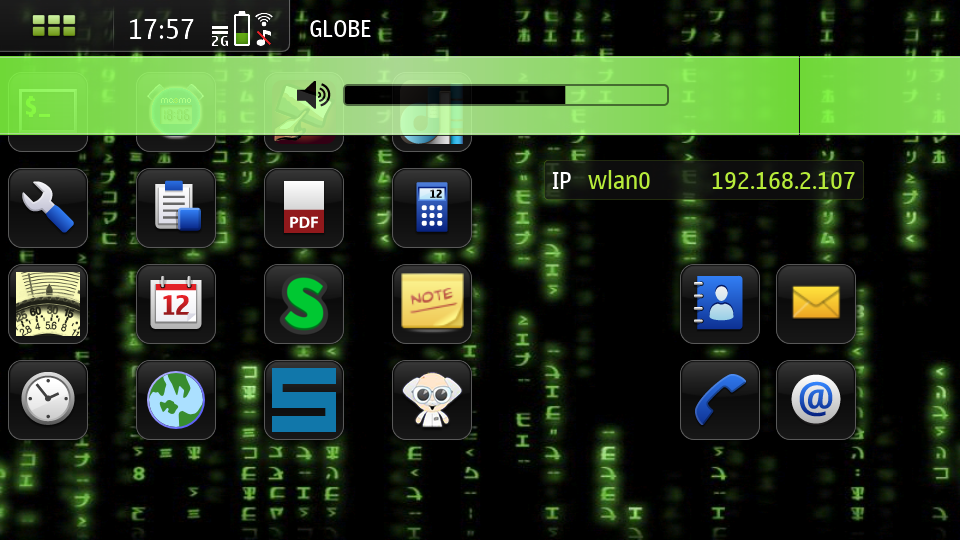
Additional Software changes
ofono
The ofono version for all our supported devices has been updated to a more recent release - ofono 1.34. We've additionally also merged in some more patches for better pinephone support (see issue #597 and issue #598)
Having all devices on the same ofono package also helps with maintainability!
gtk2
Our Gtk2 sliders weren't as repsonsive to touch input as they should be, due to some Maemo patches that were missing. This is now fixed, see issue #582 for more info.
Themes on images
At some point, loading themes was broken on our 32bit image builds (see issue #599 for what that looks like), but this has since been fixed. The problem turned out to be a problem in QEMU where readdir() would fail for a 32 bit guest on a 64 host. We worked around this problem by adding an additional image building machine that is 32 bit.
Pulseaudio configuration
We have improved the pulseaudio setup on the devices, in particular:
- We now set the correct default audio sink on the Pinephone
- All devices should now automatically switch upon headphone plug or unplug events, using the switch on port module
- We have added the ability to add arbitrary other config files in the /etc/pulse/leste.pa.d directory.
System log (rsyslog) configuration changes
The latest leste-config separates out the logging so that it is easier to track down problems by reviewing the logs. Some daemons got their own log files in /var/log/maemo, like icd2, mce, ofono, dsme, and so on. See issue #588 for some more details.
Debugfs entries in fstab
Upon installation of the leste-config package, the install scripts will check if debugfs is present in /etc/fstab, and if not, it will add a line to mount it. This will not remain the case forever (as it can potentially lead to more security issues), but various kernel power management tweaks are only available through debugfs, so for now we have to keep it mounted.
Default DNS server if none is provided
In some rare cases where a network does not provide a DNS server over DHCP, devices running Maemo Leste would not be able to resolve any addresses over DNS, as no server was available.
We have decided to default to 9.9.9.9 (aka "Quad9") if nothing else is available. In the future we might replace this by just running a recursive DNS resolver on the device itself. See this commit on libicd-network-ipv4 for some more information. We also very much welcome feedback regarding alternative or better default DNS servers - we have simply tried to make a decision based on privacy and availability.
libsdl1 environment variables and enabling GLESv1 in mesa
For some reason, Debian no longer enabled OpenGLES 1.0 in the Mesa builds. We have changed that in our Mesa build, once again enabling GLESv1.
Additionally, we have added some enviroment variables that make SDL prefer EGL over GLX, as that is generally better supported on our devices.
CSSU Features Configuration Editor
We have ported the CSSU features program from Maemo Fremantle's CSSU. This tools allows customising various parts of hildon-desktop and animations in the environment in general. The port is still work in progress, as some of the original user interface design files seemingly were not included in the source package (and yes there is a small menu key Main in the top right that shouldn't be there :-)).
The port is somewhat noteworthy since it's a Python Qt5 package using hildon specific features.

Community and supporting software updates
Keyring and Jenkins updates
Our key for the "extras" repository silently expired (not the first time), but now we had an easier way to providing updates, by just updating our keyring package. We have also upgraded our Jenkins instance to the latest version(s), and are working on adding a Honeycomb LX2 machine for fast ARM package builds.
Mediawiki theme
IRC user ashley contributed a forward-port of the old Maemo mediawiki theme as a selectable theme on our wiki, and you can preview it here. If you like the theme, you can make it the default from the preferences in mediawiki. See issue #590 for some more information.
What's next
Getting Telepathy support for conversations fully worked out together with the RTCom applications will be an amazing thing for our mobile operating system. Once that is working well, we can start adding support for more protocols (we're working on a Telepathy signal plugin using signald), and perhaps also fix up telepathy-hazy, which allows running many Pidgin (libpurple) protocols inside Telepathy.
From a stability standpoint, there are some bugs to be investigated still, in particular for the ofono support of the Droid series that we support. There are also some things to improve further for 2D/3D support, but it's looking much better than before.
This year we also hope to switch to the new Devuan chimaera (Debian bullseye) release, further modernising our codebase and building on top of the latest and greatest that the free software community has to offer.
Finally, we're slowly but surely getting all our of userland in place, while still heavily working on device support for the devices we support. Once userland is more or less complete, it will probably get much easier to port Maemo Leste to other (potentially newer) devices, so look forward to that too.
Interested?
If you have questions, are interested in specifics or helping out, or wish to have a specific package ported, please see our bugtracker.
We have several Nokia N900 and Motorola Droid 3, Droid 4 and Bionic units available for interested developers, so if you are interested in helping out but have trouble acquiring a device, let us know.
Please also join our mailing list to stay up to date, ask questions and/or help out. Another great way to get in touch is to join the IRC channel.
If you like our work and want to see it continue, join us!